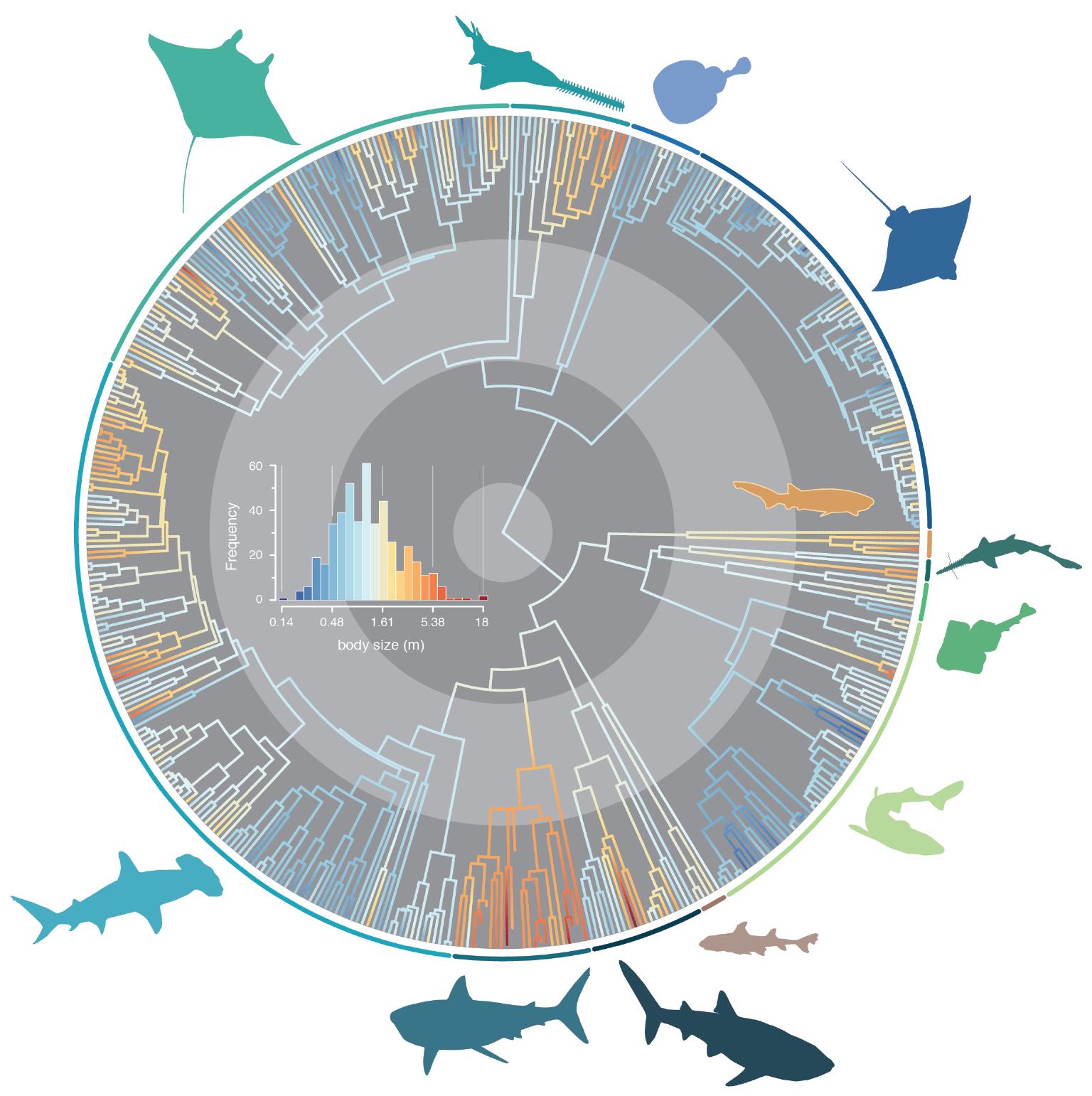
Submitted by Administrator on Thu, 24/01/2019 - 09:16
Have you ever wondered why the Megalodon shark became to be so big? Or wondered why some other sharks are much smaller?
New research from an international team of scientists including Cambridge Earth Sciences' Dr Daniel Field, led by Swansea University’s Dr Catalina Pimiento, examines the biological traits of all sharks and rays before running a series of evolutionary models to seek how gigantism evolved over time.
The results showed that for a shark to be giant, it would need to first evolve adaptations that enhance feeding such as the ability to control, at least to some degree, their own body temperature or become a filter feeder.
One of the most famous giant sharks, Megalodon, was an active predator that could measure up to 18 metres in length and became extinct around two million years ago.
Meanwhile, the whale shark, which is still around today, can also reach 18 metres but isn’t an active predator. Instead, it is a filter feeder and eats tiny plankton from the sea.
These two subjects formed key parts of the research, which centred on the tree of life for sharks, where the authors mapped characteristics relating to body size, like their thermo-regulatory capacity, feeding mechanism and diet.
Researchers then found that sharks could become giants by following one of two possible evolutionary pathways; the mesothermic pathway, which consists of evolving the ability to self-control the temperature of their most important organs – or the filter-feeding pathway, which consists of evolving the ability to feed on microscopic plankton.
The mesothermic adaptation allows sharks to live in different types of habitats, including cold waters, and also hunt more effectively. The filter-feeding adaptation allows sharks to eat the most abundant food in the ocean – plankton.
However, there are risks involved for any shark following the evolutionary pathways that lead to gigantism. The mesothermic species need to consume big prey to maintain their high energetic demands, but when these prey are scarce, giant sharks are more susceptible to extinction. The scarcity of large prey in times of rapid climatic change was the most likely cause of the extinction of Megalodon.
While the filter feeders have shown more resilience, they are at risk of eating large volumes of toxic micro plastics that now can be found in the world’s oceans, thus threatening their extinction.
Dr Daniel Field said "giant sharks are among the most fearsome and awe-inspiring animals on Earth, but unraveling how, when, and how many times sharks acquired enormous body sizes throughout their evolutionary history has been challenging. Our work clarifies the evolutionary prerequisites for the acquisition of gigantic size in sharks, providing new insight into the origin of these amazing organisms."
Evolutionary pathways toward gigantism in sharks and rays, Catalina Pimiento, Juan L. Cantalapiedra, Kenshu Shimada, Daniel J. Field and Jeroen B. Smaers is published in Evolution.
This article was based on a press release by Swansea University.
